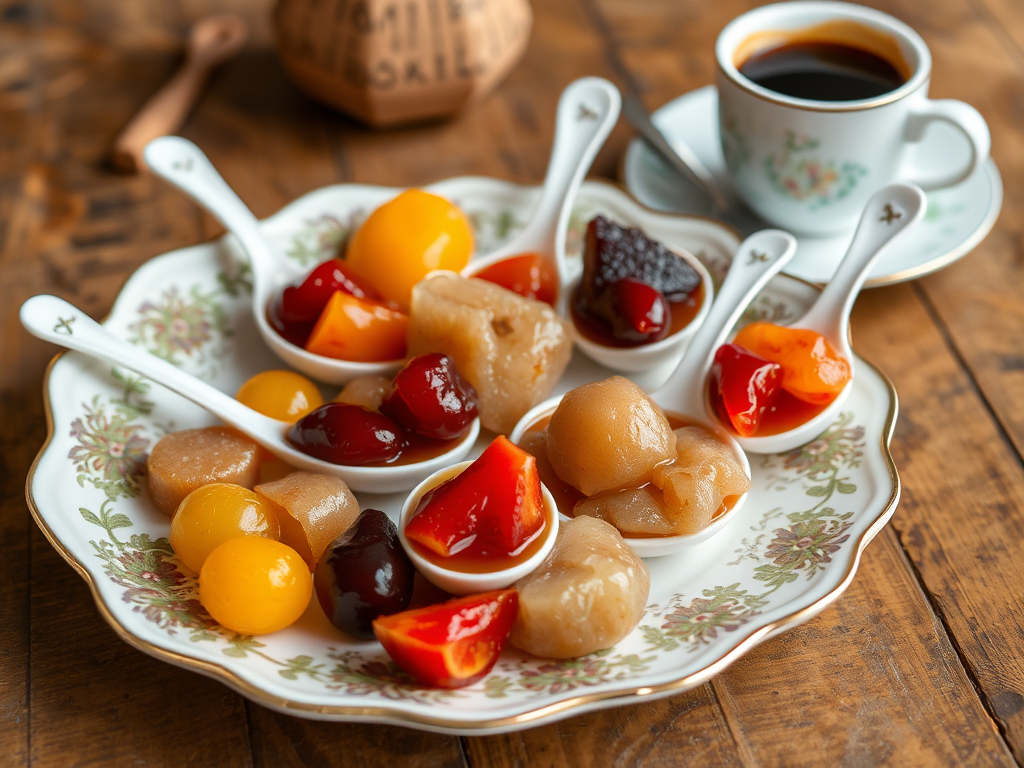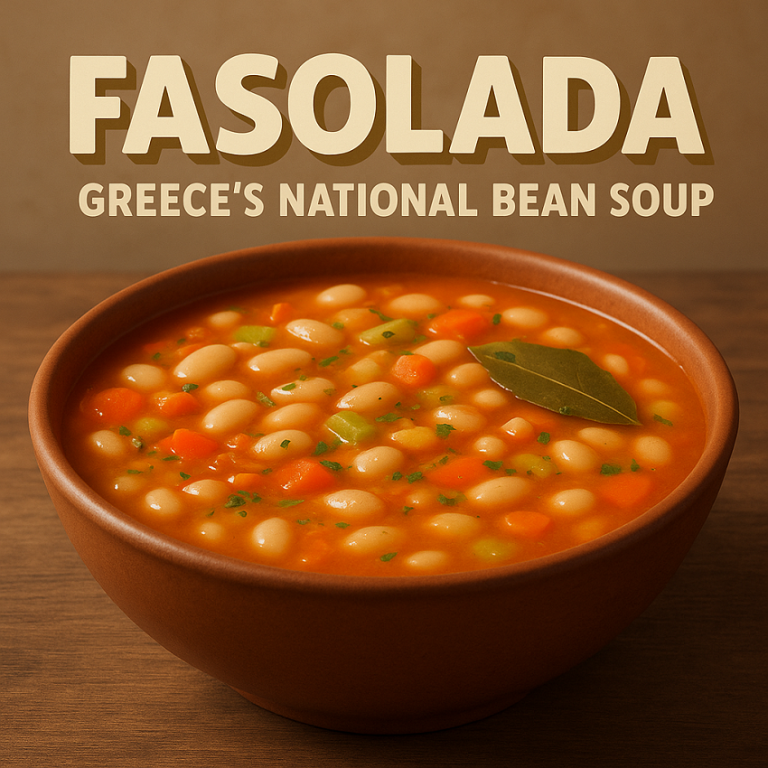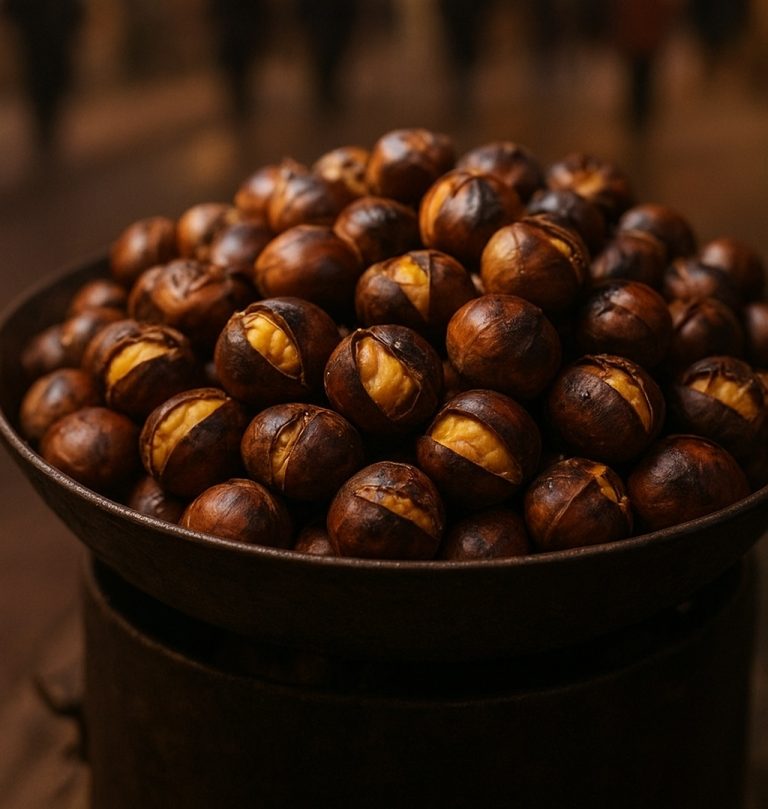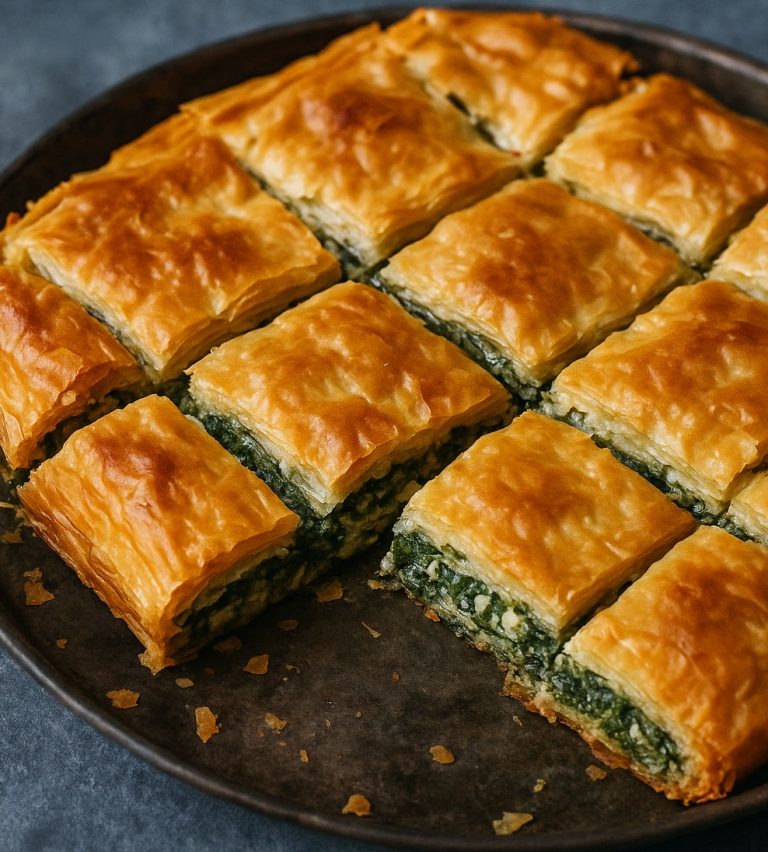
Introduction
Glyko tou Koutaliou, often affectionately referred to as “glyko,” is a beloved traditional Greek sweet that encapsulates the spirit of Greek hospitality and culinary artistry. This delightful confection is primarily made from fruits, vegetables, or nuts, and is typically served with a spoon, making it a unique and charming addition to any meal or gathering. Glyko has deep roots in Greek culture and continues to be an enduring symbol of warmth and generosity.
History and Origins
The origins of Glyko tou Koutaliou can be traced back to the Byzantine era, where it was prepared for special occasions and served to guests as a symbol of welcome and hospitality. The tradition of offering sweets to visitors has been a longstanding custom in Greece, with glyko playing a central role. The diverse regional variations of glyko reflect the local produce and flavors, showcasing the rich agricultural heritage of the country.
As Greece evolved through historical changes, so did the recipes for glyko. Each region began to develop its unique twists on the classic recipes, influenced by local ingredients and culinary practices. For example, in the Peloponnese, figs are often used, whereas in the islands, citrus fruits may be more prevalent. This regional diversity makes glyko not only a treat but also a reflection of Greece’s rich tapestry of culture and tradition.
Common Ingredients
The primary ingredients of glyko include:
- Fruits: A wide array of fruits can be used, including cherries, figs, quince, grapes, and citrus fruits like oranges and lemons. Each fruit brings its own unique flavor and character to the sweet.
- Nuts: Almonds and walnuts are commonly incorporated, adding both texture and richness to the dish.
- Sugar: Essential for sweetness and preservation, sugar is the backbone of glyko, creating a syrupy consistency that envelops the ingredients.
- Water: Used to create the syrup, which binds the fruits and nuts together while enhancing their natural flavors.
Preparation Method
The preparation of glyko is an art form, requiring patience and care. Here’s a detailed overview of the steps involved:
- Selection of Ingredients: The process begins with the careful selection of fresh, ripe fruits or vegetables. Seasonal ingredients are preferred, ensuring the best flavor and quality.
- Cleaning and Cutting: Once selected, the fruits are thoroughly cleaned, peeled if necessary, and cut into appropriate sizes. For example, cherries may be pitted, while figs could be quartered.
- Cooking: The fruits or vegetables are then boiled with sugar and water. This crucial step transforms the ingredients, infusing the syrup with their natural sweetness. The mixture is simmered until it thickens and reaches a syrupy consistency, which can take several hours.
- Cooling: After cooking, the mixture is allowed to cool. During this time, the syrup thickens further, creating a luscious coating around the fruits.
- Storage: The final step involves carefully transferring the glyko into sterilized jars. Often, the syrup is poured over the top to ensure freshness and longevity.
Regional Variations
One of the most fascinating aspects of glyko is the regional variations that exist across Greece. Each area prides itself on its unique take on this traditional sweet:
- Chios: Known for its mastiha (mastic), glyko from this island often features this aromatic resin, adding a distinct flavor.
- Crete: Here, you might find glyko made with local citrus fruits, particularly bitter oranges, which offer a unique balance of sweetness and tartness.
- Peloponnese: This region is famous for its fig glyko, which captures the essence of the luscious figs grown in the area.
These regional differences not only enhance the culinary experience but also allow for a deeper understanding of Greece’s diverse agricultural landscape.
Serving Suggestions
Glyko tou Koutaliou is traditionally served in small portions on a spoon, accompanied by a glass of cold water or a cup of strong Greek coffee. This simple yet elegant presentation highlights the sweet’s charm.
In addition to being enjoyed on its own, glyko can also be used creatively in various dishes:
- Yogurt Topping: A spoonful of glyko can elevate plain yogurt, adding sweetness and texture, perfect for breakfast or dessert.
- Ice Cream Accompaniment: Drizzling glyko over ice cream creates a delightful contrast between the creamy texture and the syrupy sweetness.
- Cake Filling: Some bakers incorporate glyko into cakes or pastries, providing a burst of flavor and moisture.

Cultural Significance
In Greece, glyko is more than just a dessert; it is a cultural symbol of hospitality and generosity. Offering glyko to guests is a traditional gesture of welcome, conveying warmth and affection. It is often prepared for significant occasions such as weddings, baptisms, and religious celebrations, making it an integral part of Greek life.
During special festivities, families often gather to prepare glyko together, passing down recipes and techniques through generations. This communal aspect of preparation adds to the sweet’s significance, making it a cherished family tradition.
Conclusion
Glyko tou Koutaliou is a beautiful representation of Greek culinary tradition, showcasing local ingredients and the importance of hospitality in Greek society. Whether enjoyed on its own or as part of a meal, this sweet treat continues to be a favorite among locals and visitors alike. Embracing glyko is not just about savoring a dessert; it’s about participating in a rich cultural legacy that celebrates the sweetness of life.
As you explore the world of Greek cuisine, let Glyko tou Koutaliou be your introduction to the warmth and generosity that define Greek culture. With each spoonful, you taste history, tradition, and a love for life that is quintessentially Greek.



